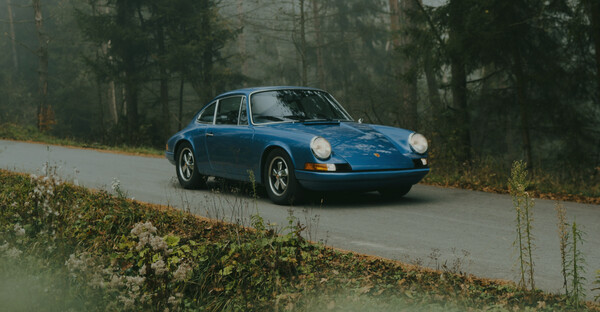Description
Ford’s ‘Total Performance’ programme of the 1960s led to success at Le Mans with the GT40, at the Indianapolis 500 with Lotus, and in Grand Prix racing with the Cosworth-developed DFV engine. It also came within an ace of giving the Blue Oval an unlikely victory on the Monte Carlo Rally.
The Ford Falcon had been introduced in 1959 as the marque’s ‘compact’ model for the domestic US market, and initially featured a six-cylinder engine that offered limited performance. In 1963, right at the end of the first-generation Falcon’s production run, that shortcoming was addressed via the creation of the ‘Sprint’ model, which featured a 4. 3-litre V8 engine.
The second-generation Falcon was introduced for 1964 and a team of eight was entered for that year’s Monte Carlo Rally. The competition-prepared Falcon Sprints featured a 4. 7-litre V8, tuned to produce 285bhp and driving through a four-speed, all-synchromesh, close-ratio gearbox and a limited-slip differential. Suspension was via double wishbones and coilover dampers at the front, with a rigid rear axle and semi-elliptic leaf springs.
Front disc brakes replaced the standard drums, and a programme of weight-saving included using glassfibre for the doors, boot lid and bonnet, while the side and rear windows were Perspex rather than glass.
Although that year’s Monte Carlo Rally was won by Paddy Hopkirk in the works Mini Cooper S, Swedish ace Bo Ljungfeldt set the fastest time on all of the special stages in his Falcon. The ‘handicapping’ system nonetheless meant that he trailed Hopkirk by 64 seconds heading into the final test around the Monaco Grand Prix circuit, and although he clawed back 34 seconds he had to settle for what was an excellent second place overall.
More than 50 years later, the owner of the Falcon you see here had returned from taking part in the Peking-Paris in a Datsun 240Z and was looking for something a bit larger in which to tackle upcoming events. Inspired by Ljungfeldt’s heroics on the Monte Carlo Rally, he commissioned Mexican-based specialist Matthias Heyer – son of German racing driver Hans Heyer – to source and build him a Falcon.
Heyer specialised in building Falcons to tackle the gruelling Carrera Panamericana, and he duly found a car in Mexico. His remit was to prepare something that could tackle the Peking-Paris, and one year was spent on the initial ‘from a bare shell’ build, after which the car completed the Trans-America Challenge in the hands of its new owner. Heyer then collected it from the finish in Seattle and drove it all the way back to Mexico!
A further programme of fine-tuning was carried out before the Falcon was shipped to the UK, after which it completed the Carrera Espana and the New Zealand Classic.
Heyer’s methodical and painstaking approach led to this Falcon being prepared to the highest standard, from the seam-welding and shell strengthening to the blue-printed 351 cubic-inch Windsor engine, adjustable electric power steering, nine-inch diff and six-speed Tremec gearbox. Following the New Zealand event, a further round of weight-saving was carried out. The air-conditioning was removed, the side and rear glass replaced with Perspex, and an alloy rear axle fitted, with the result that a total of 250kg was saved.
Back-ups have been installed for the fuel and ignition systems, and the Falcon has proved itself to be a rugged and reliable car. The only mechanical failure in more than 20, 000 event miles has been the starter motor, which was soon replaced by a Ford dealer despite being in a remote part of New Zealand.
Now being offered for sale through Rally Preparation Services Ltd, this well-specced Ford Falcon is a charismatic and dependable choice of long distance historic rally car, and has attracted a great deal of attention wherever it’s competed.
The car is currently with RPS’ sister company, the SASCo storage facility and available for inspection.
All viewings and test drives welcomed by appointment at Rally Preparation Services.
All enquiries please contact us



















